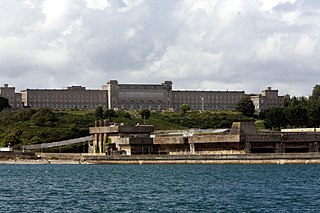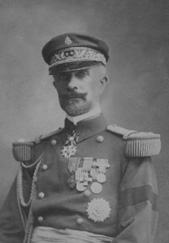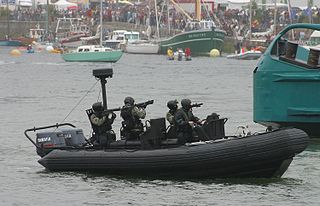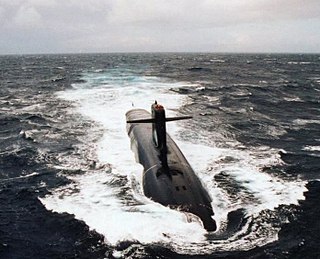 W
WThe French Navy, informally "La Royale", is the maritime arm of the French Armed Forces. Dating back to 1624, the French Navy is one of the world's oldest naval forces. It has participated in conflicts around the globe and played a key part in establishing the French colonial empire.
 W
WThe Brest Naval Training Centre is one of the main training centres for the French Navy. Housed in the Brest naval base, the CIN is made up of the lycée naval, the École de maistrance and the seamen's training school.
 W
WThe Commandos Marine are the Special Operation Forces (SOF) of the French Navy. The Commandos Marine are nicknamed Bérets Verts. They operate under the Naval Riflemen and Special Operations Forces Command (FORFUSCO) and form part of the French Special Operations Command.
 W
WThe Compagnies Franches de la Marine were an ensemble of autonomous infantry units attached to the French Royal Navy bound to serve both on land and sea. These troupes constituted the principal military force of France capable of intervening in actions and holding garrisons in outre-mer (overseas) from 1690 to 1761. Independent companies of the navy and colonial regulars, were under the authority of the French Minister of Marine, who was also responsible for the French navy, overseas trade, and French colonies.
 W
WAdmiral Henri du Couëdic de Kerérant (1868–1947) was a 20th-century French naval officer, serving during the First and Second World Wars. He was the commanding officer of the ship Jean-Bart in the Dardanelles during the Black Sea Mutiny. He restored authority on the ship that had been taken over by the mutineers. From June 1924 he was the commander in chief of the Division Navale du Levant.
 W
WThe École de maistrance is the training school for future non-commissioned officers in the French Navy. It was set up in 1933 under this name, it is now part of the Brest Naval Training Centre and within the remit of the Direction du personnel militaire de la marine (DPPM). It is currently headed by capitaine de frégate Gabriel Steffe.
 W
WThe École navale is the French naval academy, in charge of the education of the officers of the French Navy. They are educated at the academy for responsibilities onboard surface ships and submarines, in French Naval Aviation, with the fusiliers marins and commandos, and on the general staff.
 W
WThe Écrivains de Marine is a French association bringing together twenty writers with knowledge and practice of the sea. Founded in 2003 by Jean-François Deniau in close partnership with the French Navy, the writers of the Navy in an agreement signed with the Ministry of Defence which undertakes to "collectively serve the navy, promote and preserve the culture and heritage of the sea, and more generally promote the maritime dimension of France".
 W
WThe French term Escorteur appeared during the Second World War to designate a warship, of a medium or light displacement, whose mission was to protect ocean convoys and naval squadrons from attacks by submarines. This role was in general handled by a destroyer escort such as the Buckley and Cannon classes built in the United States, or a Hunt-class destroyer built by the United Kingdom, or even a River class built by the United Kingdom, Canada and Australia. The Imperial Japanese Navy used the denomination of Kaibokan for this type of naval ship.
 W
WThe ETRACO is the standard light inflatable boat of French special forces naval branch, the Commandos Marine.
 W
WThe Commandos Marine are the Special Operation Forces (SOF) of the French Navy. The Commandos Marine are nicknamed Bérets Verts. They operate under the Naval Riflemen and Special Operations Forces Command (FORFUSCO) and form part of the French Special Operations Command.
 W
WFrench Navy modernization is pursued on the basis of successive Projet de loi de programmation militaire ,. These defence modernization plans are formulated on a rolling basis pursuant to strategic, political and budgetary factors and pressures. Current program modernizations are anchored in the commitment to an ongoing force of 15 large frigate/destroyer sized ships. Modernization also encompasses other core and supporting capabilities including the nuclear-powered submarine fleet, the patrol vessel force and major support ships. As of 2020, principal modernization projects include:8 FREMM multipurpose frigates – Eight ships were ordered as part of the 2003–08 defence programming law and a further three were planned to be ordered. Two ships will be optimised for anti-aircraft warfare to replace the two cancelled Horizon-class ships. Construction of the first ship in this class began in 2007 and she was commissioned in 2012. In 2015 the order was cut to 8 in order to allow the purchase of five FTI Mid-Size Frigates from 2023. As of 2020, six vessels oriented toward anti-submarine operations are in service, with two ships oriented toward air-defence warfare scheduled to follow in 2021 and 2022. 5 FTI/FDI Mid-Size Frigates from 2023. The lead ship of the FDI class, Admiral Ronarc'h, began construction in October 2019. Six nuclear attack submarines of the Barracuda-class. The contract for the first three of these submarines was signed in 2006. The construction of the first boat in the class also began in 2006 and she is scheduled to be commissioned in 2020. The additional boats in the class will enter service through the 2020s, with the sixth submarine planned for service entry in 2030. The Durance class will be replaced under the FLOTLOG project by four derivatives of Italy's Vulcano-class logistic support ship, to be delivered in 2022–29. Six 80-metre POM-type patrol vessels to be delivered between 2022 and 2025 to protect the exclusive economic zone of French overseas territories in the Indian Ocean and the Pacific. The vessels were ordered in December 2019 and began construction in October 2020. The Navy is also planning to replace its A-69 D'Estienne d'Orves-class avisos/offshore patrol vessels based in both the Atlantic and Mediterranean, and PSP Flamant-class coast guard vessels based in Cherbourg, with up to 10 ocean-going patrol vessels. Initial vessel delivery is planned for 2025 though the final design has yet to be announced. One option may be the joint-European patrol corvette program, currently under consideration by France, Italy, Spain and Greece, a program which has also been mooted as providing a potential replacement for the Navy's six Floreal-class surveillance frigates.
 W
WHonneur, patrie, valeur, discipline is the motto of the French Navy. It is found inscribed on all ships and buildings, sometimes with each word on its separate plaque at a corner of the superstructure.
 W
WThe hôtel de la Marine is a historic building on place de la Concorde in Paris, to the east of rue Royale. It was built between 1757 and 1774 on what was then known as place Louis XV, with a façade by Ange-Jacques Gabriel, First Architect to the King and designer of the square. The identical building to its west now houses the hôtel de Crillon.
 W
WThe Karachi affair, otherwise known as Agosta Submarine scandal, was a major military scandal that took place in the second administration of Prime Minister Benazir Bhutto, involving the presidencies of François Mitterrand and Jacques Chirac in 1992–97.
 W
WThe submarines of France include nuclear attack submarines and nuclear ballistic missile submarines of various classes, operated by the French Navy as part of the French Submarine Forces.
 W
WA marinière, or tricot rayé, is a cotton long-armed shirt with horizontal blue and white stripes. Characteristically worn by quartermasters and seamen in the French Navy, it has become a staple in civilian French fashion and, especially outside France, this kind of striped garment is often part of the stereotypical image of a French person. It is also known as a Breton shirt, as many sailors in the French Navy were from Brittany.
 W
WThe Préfet maritime is a servant of the French State who exercises authority over the sea in one particular region. As a civil servant, he reports to the Prime Minister. But the Maritime Prefect is simultaneously charged of military operations, and for this reason also reports to the chief of the general staff.
 W
WThe French Navy, informally "La Royale", is the maritime arm of the French Armed Forces. Dating back to 1624, the French Navy is one of the world's oldest naval forces. It has participated in conflicts around the globe and played a key part in establishing the French colonial empire.
 W
WPeintre de la Marine is a title awarded by the minister of defence in France to artists who have devoted their talents to the sea, the French Navy and other maritime subjects. It was set up in 1830 by the July Monarchy and can be awarded to painters, photographers, illustrators, engravers, and sculptors.
 W
WStanding French Navy Deployments is a list of current deployments by the French Navy:
 W
WThe annually held Varuna naval exercise is an integral part of France–India strategic relationship in the 21st century and consists of naval cooperation drills between the French Navy and the Indian Navy.